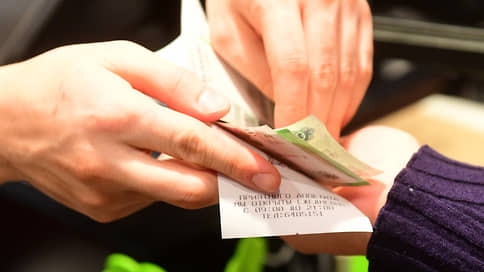Russians began to buy either very little or too much
[ad_1]

The crisis forced the Russians to change their consumer habits. If earlier they were more likely to buy products in medium-sized packages, now they are either very small or very large. The transition to such extremes is caused by the desire to save money. Goods in small packages allow you not to overpay for a volume that is not immediately used. And purchases of large volumes are more profitable when recalculating the cost per kilogram or liter. Due to this, retailers manage to maintain demand, but it will be difficult to maintain it for a long time due to rising prices, experts warn.
For the year (from June 2022 to June 2023), retail sales of some mid-range products dropped markedly, consumers switched to products in smaller packages or large ones, NielsenIQ found. This trend is especially evident in the meat, confectionery and alcohol categories. Thus, according to NielsenIQ, sales growth for the year by 53% in physical terms was observed for sausages weighing up to 100 g and 42% – up to 149 g, and for products weighing 0.9-1 kg – by 16-29%.
Sales of sausages in packages weighing 200–299 g increased by 13%, from 700 to 799 g – by 49%. At the same time, the demand for sausages and sausages in 500 g decreased by 17%. Raw meat sales increased mainly due to the segment by weight – by 5% yoy, while the demand for portioned goods weighing 600–699 g and 1.8–2 kg decreased by 29% and 17%, respectively, added to NielsenIQ.
The demand for sweet biscuits sold by weight also increased by 13.7%, while for products in small packages – by only 1.2%. The Russians began to purchase alcohol in large bottles more often: for example, retail sales of vodka from 1 liter or more increased by 40% over the year. A Kommersant source in the retail market notes that sales of large-volume bottles in all categories of strong alcohol are growing this year.
The flow of demand from Russians, who traditionally bought products in medium-sized packages, for goods of small or, conversely, large volumes, indicates a change in established consumer habits, NielsenIQ concludes. They explain that the transition to small packaging allows you not to overpay for the volume that is not used and quickly deteriorates. Large formats tend to be more profitable in terms of cost per kilogram or liter of product, adds NielsenIQ. A similar situation this year due to high inflation is observed in the US and the EU, adds Oleg Shenderyuk, director of Yakov & Partners.
NEO Center expert Albina Koryagina notes that now consumers are moving from purchases for the future to purchases focused on consumption as needed. As Kommersant previously reported, the Russians made large stocks in the first half of 2022, when, after the outbreak of hostilities by the Russian Federation in Ukraine, sugar and durable goods were bought up in a frenzy.
Retailers are also confirming the change in consumer habits. Lenta says that demand is growing in the network, for example, for cold cuts. In Vkusville, sales growth for the year is 250% for bento cakes the size of a small lunch box and 20-30% for sweets, nuts, groceries, frozen foods without packaging. The network also noticed the demand for ready-made meals of a “family format”, for example, soups with a volume of 1 liter or more.
Due to the continuing rise in prices, retailers, however, are unlikely to be able to keep the demand of buyers for a long time due to products in small packages, they will still have to increase the volume of promotions, a number of experts interviewed by Kommersant believe. But in networks, the share of discounts in some categories is already high, Oleg Shenderyuk notes. Most likely, the expert believes, retailers will have to increase the share of products under their own trademarks, which allows them to optimize prices on the shelves. This is also relevant against the backdrop of the withdrawal of some foreign brands from the Russian market and the ongoing problems with import logistics, Mr. Shenderyuk adds. He also expects an increase in the share of buyers in discount stores due to the crisis, which already now reaches 55%.
[ad_2]
Source link





